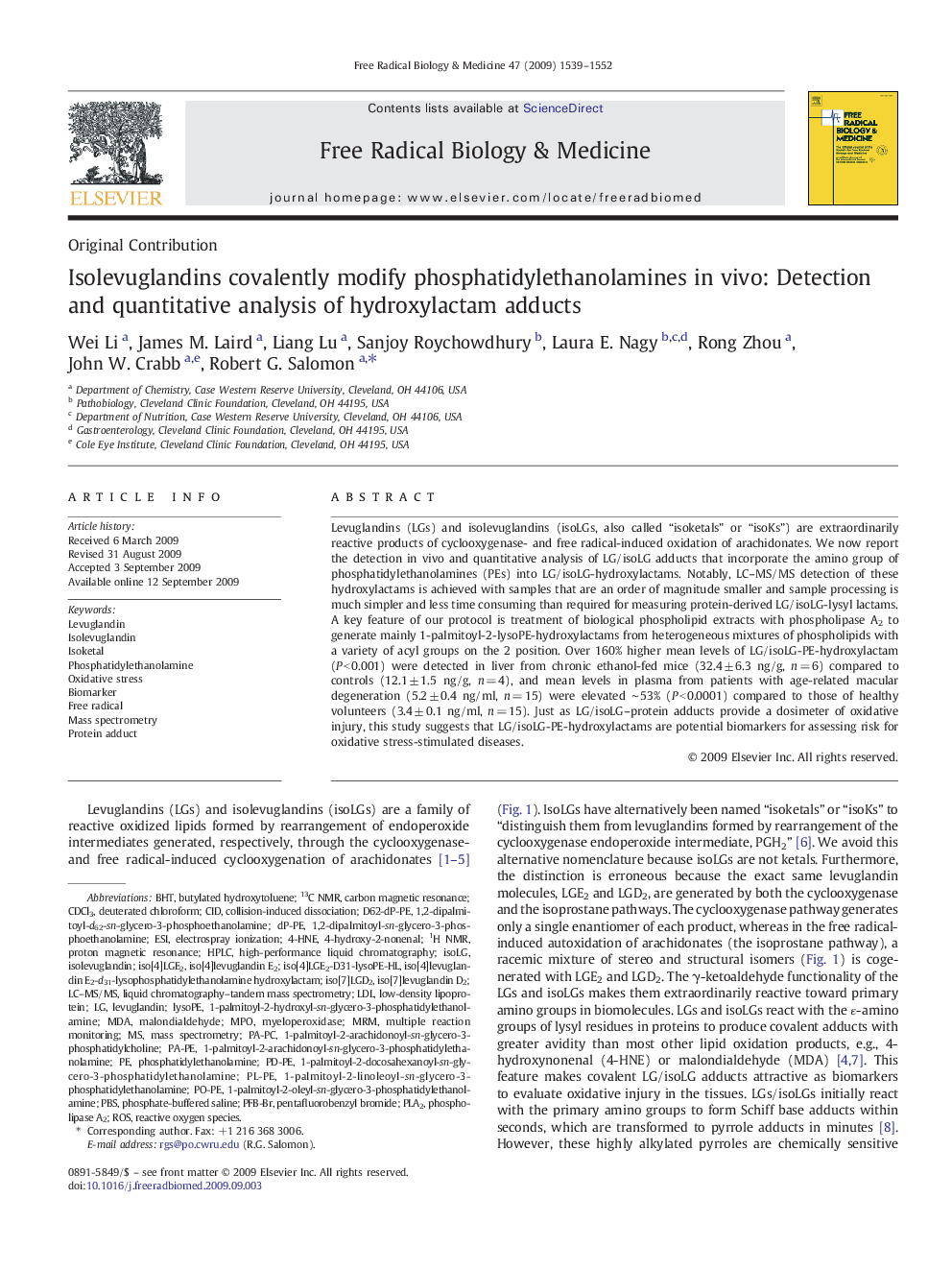| Article ID | Journal | Published Year | Pages | File Type |
|---|---|---|---|---|
| 1909637 | Free Radical Biology and Medicine | 2009 | 14 Pages |
Levuglandins (LGs) and isolevuglandins (isoLGs, also called “isoketals” or “isoKs”) are extraordinarily reactive products of cyclooxygenase- and free radical-induced oxidation of arachidonates. We now report the detection in vivo and quantitative analysis of LG/isoLG adducts that incorporate the amino group of phosphatidylethanolamines (PEs) into LG/isoLG-hydroxylactams. Notably, LC–MS/MS detection of these hydroxylactams is achieved with samples that are an order of magnitude smaller and sample processing is much simpler and less time consuming than required for measuring protein-derived LG/isoLG-lysyl lactams. A key feature of our protocol is treatment of biological phospholipid extracts with phospholipase A2 to generate mainly 1-palmitoyl-2-lysoPE-hydroxylactams from heterogeneous mixtures of phospholipids with a variety of acyl groups on the 2 position. Over 160% higher mean levels of LG/isoLG-PE-hydroxylactam (P < 0.001) were detected in liver from chronic ethanol-fed mice (32.4 ± 6.3 ng/g, n = 6) compared to controls (12.1 ± 1.5 ng/g, n = 4), and mean levels in plasma from patients with age-related macular degeneration (5.2 ± 0.4 ng/ml, n = 15) were elevated ∼ 53% (P < 0.0001) compared to those of healthy volunteers (3.4 ± 0.1 ng/ml, n = 15). Just as LG/isoLG–protein adducts provide a dosimeter of oxidative injury, this study suggests that LG/isoLG-PE-hydroxylactams are potential biomarkers for assessing risk for oxidative stress-stimulated diseases.
